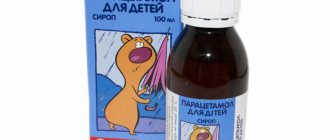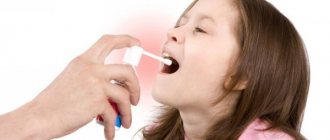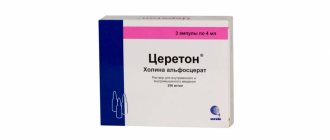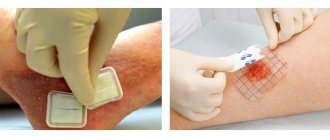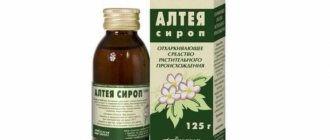An effective drug for reducing high fever in a child, which is a common symptom of many diseases, is paracetamol for children. It is produced in the form of a suspension and has a pleasant taste, which simplifies the use of the product when treating children.
Indications and contraindications
Paracetamol suspension for children, the instructions confirm this, is prescribed to lower temperatures and relieve mild pain in various infectious and inflammatory diseases. In addition, the children's drug in the form of a suspension is suitable as an anesthetic for toothache, in particular it is used during teething. It is also indicated for relieving headaches. When used, the child’s condition is normalized when ear pain occurs due to otitis media. The medicine alleviates the condition of children with sore throat.
Intended as an antipyretic and analgesic for use from 3 months. It is allowed to continue using it for its intended purpose for up to 12 years. At the age of up to 3 months, a single dose is allowed when post-vaccination hyperthermia appears. If the temperature cannot be brought down, repeated use is prohibited and a pediatrician’s consultation is required.
An absolute contraindication is individual intolerance to the active substance. The drug for children is not prescribed until the baby is one month old. It is necessary to refuse the drug for various blood diseases. The suspension should not be taken in combination with other drugs that contain paracetamol.
Paracetamol for children 120mg/5ml 100ml suspension for oral administration
pharmachologic effect
Analgesic non-narcotic drug.
Composition and release form Paracetamol for children 120 mg/5 ml 100 ml suspension for oral administration
Suspension - 100 ml:
- Active ingredient: paracetamol – 2,400 g;
- Excipients: malic acid – 0.050 g, xanthan gum – 0.600 g, maltitol – 80,000 g, non-crystallizing sorbitol 70% – 1.330 g, anhydrous citric acid – 0.020 g, sodium nipasept (sodium methyl parahydroxybenzoate, sodium ethyl parahydroxybenzoate, sodium propyl parahydroxybenzoate) – 0.150 g , strawberry flavoring – 0.100 g, azorubine dye – 0.001 g, water – up to 100 ml.
Suspension for oral administration, 120 mg/5 ml.
100 ml of suspension in a bottle made of glass melt, orange glass or a polymer bottle or a bottle of polyethylene terephthalate for medicines, sealed with a polymer screw cap with first opening control or a cap with a “push-turn” system.
A label based on self-adhesive film or a label made from label paper is glued onto the bottle.
One bottle, together with instructions for use, as well as a measuring cup or measuring spoon, or without a measuring cup and measuring spoon, is placed in a cardboard package (pack).
Description of the dosage form
A homogeneous suspension of pink color with a characteristic odor.
Directions for use and doses
The drug is taken orally. It is recommended to use with plenty of liquid 1-2 hours after meals. The contents of the bottle should be shaken well before use. A measuring cup or spoon placed inside the package allows you to dose the drug correctly and rationally. The dose of the drug depends on the age and body weight of the child. For children over 3 months of age, the drug is prescribed at 10-15 mg/kg body weight 3-4 times a day, the maximum daily dose is no more than 60 mg/kg body weight. If necessary, you can take the drug every 4-6 hours in a single dose (15 mg/kg), but no more than 4 times within 24 hours.
| Body weight (kg) | Age | Single dose, ml | Single dose, mg | Max, daily dose, ml | Max, daily dose, mg |
| 4,5-6 | 2-3 months | By appointment only. doctor | By appointment only. doctor | By appointment only. doctor | By appointment only. doctor |
| 6-8 | 3-6 months | 4,0 | 96 | 16 | 384 |
| 8-10 | 6-12 months | 5,0 | 120 | 20 | 480 |
| 10-13 | 1 -2 years | 7,0 | 168 | 28 | 672 |
| 13-15 | 2-3 years | 9,0 | 216 | 36 | 864 |
| 15-21 | 3-6 years | 10,0 | 240 | 40 | 960 |
| 21-29 | 6-9 years | 14,0 | 336 | 56 | 1344 |
| 29-42 | 9-12 years | 20,0 | 480 | 80 | 1920 |
Do not exceed the recommended dose.
Duration of use without consulting a doctor: to reduce temperature and to reduce pain - no more than 3 days. In the future, as well as in the absence of a therapeutic effect, you should consult a doctor.
For children aged 2 to 3 months, a single dose is 10-15 mg/kg. Apply 1-2 times a day, with an interval of at least 4 hours. If fever persists after taking the second dose of the drug, you should consult a doctor. Taking paracetamol in children aged 2-3 months for other indications is only as prescribed by a doctor.
If renal function is impaired, the time interval between doses of the drug should be at least 8 hours with a creatinine clearance of less than 10 ml/min, and at least 6 hours with a creatinine clearance of 10-50 ml/min.
Pharmacodynamics
The drug has analgesic and antipyretic properties. Blocks cyclooxygenase in the central nervous system, affecting the centers of pain and thermoregulation. The anti-inflammatory effect is practically absent. It does not affect the condition of the gastrointestinal mucosa and water-electrolyte metabolism, since it has an extremely small effect on the synthesis of prostaglandins in peripheral tissues.
Pharmacokinetics
Absorption is high, the drug is quickly and almost completely absorbed from the gastrointestinal tract.
Communication with plasma proteins is about 10 - 25%. Peak plasma concentration is reached after 0.5 - 2 hours. The maximum plasma concentration is 5 - 20 mcg/ml.
Penetrates the blood-brain barrier. Less than 1% of the dose of paracetamol taken by the mother passes into breast milk. The distribution of the drug in body fluids is relatively even. Metabolized primarily in the liver along three main routes: conjugation with glucuronides, conjugation with sulfates, oxidation by microsomal liver enzymes. In the latter case, toxic intermediate metabolites are formed, which are subsequently conjugated with glutathione, and then with cysteine and mercapturic acid. The main isoenzymes of cytochrome P450 for this metabolic pathway are isoenzymes CYP2E1 (mainly), CYP1A2, CYP3A4 (minor role). With glutathione deficiency, these metabolites can cause damage and necrosis of hepatocytes. Additional metabolic pathways include hydroxylation to 3-hydroxyparacetamol and methoxylation to 3-methoxyparacetamol, which are subsequently conjugated to glucuronides or sulfates. In newborns and children 3-10 years of age, the main metabolite of paracetamol is paracetamol sulfate; in children 12 years of age and older, it is conjugated glucuronide. Conjugated metabolites of paracetamol (glucuronides, sulfates and conjugates with glutathione) have low pharmacological (including toxic) activity.
The half-life when taking a therapeutic dose ranges from 1 to 4 hours, in adults 2.7 hours, in children 15 to 2 hours, total clearance 18 l/hour. When taking therapeutic doses, 90 - 100% of the dose taken is excreted in the urine within 24 hours. The main amount of the drug is released after conjugation in the liver, in the form of glucuronide (60 - 80%) and sulfate (20 - 30%). No more than 5% of the received dose of the drug is released unchanged. In elderly patients, the clearance of paracetamol decreases and the half-life (T1/2) increases. In severe renal failure (creatinine clearance below 10 - 30 ml/min), the excretion of paracetamol slows down somewhat. The rate of excretion of glucuronide and sulfate in patients with severe renal failure is less than in healthy individuals.
Indications for use Paracetamol for children 120 mg/5 ml 100 ml suspension for oral administration
Used in children from 3 months to 12 years as:
- antipyretic - to reduce elevated body temperature against the background of colds, flu and childhood infectious diseases (chicken pox, mumps, measles, scarlet fever, etc.);
- anesthetic - for toothache, including teething or tooth extraction, headaches, ear pain with otitis media and sore throat.
For children aged 2 - 3 months, a single dose is possible to reduce fever after vaccination. If the temperature does not decrease, consult a doctor.
Contraindications
- hypersensitivity to paracetamol or any other ingredient of the drug;
- severe liver or kidney dysfunction;
- age less than 2 months;
- fructose intolerance.
Carefully
Use with caution in case of impaired liver function (including Gilbert's syndrome), viral hepatitis, impaired renal function (creatinine clearance less than 30 ml/min), genetic absence of the enzyme glucose-6-phosphate dehydrogenase, severe blood diseases (severe anemia, leukopenia, thrombocytopenia), hypovolemia, dehydration, anorexia, bulimia, chronic alcoholism, diabetes. In such cases, you should consult your doctor before taking the drug. The drug should not be taken simultaneously with other drugs containing paracetamol.
Application of Paracetamol for children 120 mg/5 ml 100 ml suspension for oral administration during pregnancy and lactation
Paracetamol penetrates the placental barrier. To date, there have been no negative effects of paracetamol on the fetus in humans.
Paracetamol is excreted in breast milk: the content in milk is 0.04-0.23% of the dose taken by the mother.
If it is necessary to use paracetamol during pregnancy and lactation (breastfeeding), you should carefully weigh the expected benefits of therapy for the mother and the potential risk to the fetus or child.
Experimental studies have not established the embryotoxic, teratogenic and mutagenic effects of paracetamol.
Use in children
Application is possible according to the dosage regimen.
special instructions
The drug contains paracetamol, therefore, in order to avoid exceeding the maximum daily dose, the drug should not be used simultaneously with other drugs containing paracetamol.
Patients with glutathione deficiency are susceptible to overdose and caution should be exercised.
Cases of liver failure have also been reported in patients with low glutathione levels, in particular in extremely malnourished patients suffering from anorexia, persons with chronic alcoholism or patients with a low body mass index.
The use of paracetamol in patients with low glutathione levels, such as those with sepsis, may increase the risk of developing metabolic acidosis.
The drug can be given to children from 2 to 3 months only as prescribed by a doctor.
When performing tests to determine uric acid and blood sugar levels, tell your doctor about the use of Paracetamol. Paracetamol distorts the results of laboratory tests of glucose and uric acid.
If there is no therapeutic effect for more than 3 days, you should consult a doctor.
When taking the drug for more than 5 days, it is recommended to monitor peripheral blood parameters and the functional state of the liver.
Impact on the ability to drive vehicles and operate machinery
The drug does not affect the ability to drive vehicles or engage in other potentially hazardous activities that require increased concentration and speed of psychomotor reactions.
Overdose
In case of overdose, intoxication is possible, especially in children, patients with liver diseases, in patients with malnutrition, in persons taking inducers of microsomal liver enzymes, and fulminant hepatitis, liver failure, cholestatic hepatitis, cytolytic hepatitis, sometimes with death, may occur.
Symptoms of acute paracetamol poisoning are nausea, vomiting, stomach pain, anorexia, impaired glucose metabolism (dizziness, loss of consciousness, sweating), pale skin, metabolic acidosis. When administered simultaneously to adults of 10 g or more, and to children more than 125 mg/kg, cytolysis of hepatitis occurs with complete and irreversible liver necrosis, development of liver failure, metabolic acidosis, encephalopathy, which can lead to coma and death. After 1-2 days, signs of liver damage are determined (pain in the liver area, increased activity of liver enzymes, bilirubin concentrations and decreased prothrombin levels). Clinical symptoms of liver damage reach their maximum on days 3-4. In severe cases of overdose, liver failure, progressive encephalopathy, coma, and death develop. It is possible to develop acute renal failure with tubular necrosis, the characteristic signs of which are pain in the lumbar region, hematuria, proteinuria, while severe liver damage may be absent, as well as arrhythmia and pancreatitis. With long-term use in excess of the recommended dose, hepatotoxic and nephrotoxic effects (renal colic, nonspecific bacteriuria, interstitial nephritis, papillary necrosis) may be observed.
Treatment: Stop using the drug and consult a doctor immediately.
It is recommended to lavage the stomach and take enterosorbents (activated carbon, polyphepane), and symptomatic therapy. Before starting treatment, as soon as possible after an overdose, it is necessary to determine the quantitative content of paracetamol in the blood plasma. In case of paracetamol poisoning, it is necessary to administer SH-group donors and precursors for glutathione synthesis - methionine and acetylcysteine - within 10 hours after the overdose. The need for additional therapeutic measures (further administration of methionine, acetylcysteine, etc.) is determined depending on the concentration of paracetamol in the blood, as well as on the time that has passed since its use. Liver tests should be performed at the beginning of treatment and then every 24 hours. In most cases, normalization of liver enzymes occurs within 1-2 weeks. In severe cases, a liver transplant may be required.
In case of accidental overdose, seek immediate medical attention, even if the child feels well.
Treatment of children with severe liver dysfunction 24 hours after taking the drug should be carried out jointly with specialists from a toxicology center or a specialized hepatology department.
Side effects Paracetamol for children 120mg/5ml 100ml suspension for oral administration
Adverse events are grouped by frequency (according to post-registration surveillance): very often (≥ 1/10), often (≥ 1/100 to
From the blood and lymphatic system: Rarely - anemia, thrombocytopenia, leukopenia.
From the respiratory system, chest and mediastinal organs: Very rarely - bronchospasm in patients with hypersensitivity to acetylsalicylic acid and intolerance to other non-steroidal anti-inflammatory drugs.
From the immune system: Very rarely - anaphylaxis, angioedema.
From the skin and subcutaneous tissues: Very rarely: hypersensitivity skin reactions, including skin rash, toxic epidermal necrolysis (Lyell's syndrome), Stevens-Johnson syndrome, acute generalized exanthematous pustulosis, pruritus, urticaria.
From the gastrointestinal tract: Rarely - diarrhea, abdominal pain, nausea, vomiting.
From the liver and biliary tract: Very rarely - liver dysfunction.
With long-term use in large doses, hepatotoxic and nephrotoxic effects are possible.
If any adverse reactions occur, stop taking the drug immediately and consult a doctor!
Drug interactions
When using the drug simultaneously with drugs that are inducers of microsomal liver enzymes (for example, barbiturates, ethanol, anticonvulsants, rifampicin, isoniazid, anticoagulants, zidovudine, amoxicillin + clavulanic acid, phenylbutazone, tricyclic antidepressants), caution should be exercised.
Flumecinol, butadione, St. John's wort preparations increase the production of hydroxylated active metabolites, causing the possibility of developing severe liver damage with an overdose of paracetamol (5 g and above).
When paracetamol and chloramphenicol are used together, the elimination time of chloramphenicol increases 5 times, resulting in an increased risk of chloramphenicol poisoning.
Metoclopramide and domperidone increase, and cholestyramine reduces the rate of absorption of paracetamol.
Paracetamol reduces the effectiveness of uricosuric drugs.
Long-term use of barbiturates reduces the effectiveness of paracetamol.
INR monitoring should be carried out during and after the cessation of simultaneous use of paracetamol (especially in high doses and/or for a long time) and indirect anticoagulants (for example, warfarin), since paracetamol when taken at a dose of 4 g for at least 4 days may enhance the effect of indirect anticoagulants. Irregular use of paracetamol does not have a significant effect on the effects of anticoagulants.
Alcohol contributes to the development of acute pancreatitis.
Inhibitors of microsomal oxidation (including cimetidine) reduce the risk of hepatotoxicity.
Long-term combined use of paracetamol and other non-steroidal anti-inflammatory drugs increases the risk of developing “analgesic” nephropathy and renal papillary necrosis, and the onset of end-stage renal failure.
Simultaneous long-term administration of paracetamol in high doses and salicylates increases the risk of developing kidney or bladder cancer.
Disflunisal increases the plasma concentration of paracetamol by 50% - the risk of developing hepatotoxicity.
Myelotoxic drugs increase the manifestations of paracetamol hematotoxicity.
Phenytoin reduces the effectiveness of paracetamol and increases the risk of hepatotoxicity.
Patients taking phenytoin should avoid frequent use of paracetamol, especially in high doses.
Probenecid almost halves the clearance of paracetamol, inhibiting the process of its conjugation with glucuronic acid.
If administered concomitantly, consider reducing the dose of paracetamol.
Overdose and side effects
Paracetamol for children, instructions, instructions confirm this, must be used in accordance with the recommended dosage. If you suspect that your baby accidentally received more medicine than prescribed by the doctor, you should definitely consult a doctor, even if the baby feels fine.
The danger of an overdose of children's paracetamol is the high likelihood of developing liver failure. Symptoms of liver dysfunction do not always appear immediately after taking the medicine. Very often, the baby’s condition worsens within 12-48 hours.
In case of severe overdose, there is a risk of coma and even death. Acute symptoms of paracetamol overdose are as follows:
- Pallor of the skin.
- Intestinal spasms.
- Stomach ache.
- Increased sweating.
- Nausea and vomiting.
The drug may cause negative reactions in the body after taking it. As a rule, they manifest themselves as allergic reactions on the skin. This is a rash and itching. In severe cases, urticaria and other serious pathological conditions may develop. All of them are listed in the instructions for use of the drug.
